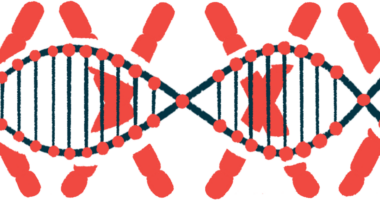Stem Cell Therapy Improved Duchenne MD Patients’ Heart Disease, Study Shows
by |

A stem cell therapy improved the heart function, walking capacity and survival of mice with Duchenne muscular dystrophy, a study reports.
The treatment involves what scientists call cardiosphere-derived cells, or CDCs.
They are the research equivalent of the stem cell therapy known as CAP-1002 that Capricor Therapeutics is developing to treat the heart disease that often strikes Duchenne MD patients.
The research, titled “Exosome-Mediated Benefits of Cell Therapy in Mouse and Human Models of Duchenne Muscular Dystrophy,” appeared in Stem Cell Reports. A team at the Smidt Heart Institute at Cedars-Sinai Medical Center in Los Angeles did the study.
Duchenne MD is caused by mutations of the gene that encodes the protein dystrophin. Loss of dystrophin leads to a series of dysfunctional cell processes that cause severe and progressive muscle-wasting in both skeletal and heart muscles. Skeletal muscle, which is attached to the bones, is responsible for voluntary body movements.
People with Duchenne MD lose their ability to walk by late childhood, and develop an enlarged heart in their teens. Heart failure is the most common cause of death among these patients.
Studies in mice have shown that CDCs can improve heart disease stemming from Duchenne MD. Because of their regenerative and anti-inflammatory properties, they could be a good treatment option for people with Duchenne, researchers say.
Join our MD forums: an online community especially for patients with Muscular Atrophy.
This potential surfaced in the Phase 1/2 HOPE-Duchenne clinical trial (NCT02485938), which involved a single-dose delivery of the cells directly into patients’ hearts. Researchers reported that CAP-1002 improved Duchenne MD patients’ skeletal-muscle and heart function. The randomized study involved 25 patients.
Researchers decided to use a mouse model of Duchenne MD to obtain gain a better grasp of the cell and molecular events behind CDCs’ benefits.
They injected two doses of CDCs into the muscular middle layer of the mice’s hearts — known as the myocardium — to see whether the treatment would slow the disease’s progression.
The CDCs generated small sacs known as exosomes that the myocardium and skeletal muscles absorbed. Exosomes contain various components of their cells of origin, including proteins and RNA, that can have beneficial effects.
CDC-generated exosomes reduced the mice’s muscle inflammation and facilitated the formation of new muscle, the researchers said. This led to improvements in both the structure and function of the Duchenne MD mice’s skeletal and heart muscles. The mice walked better and survived longer.
The study marked the first time that scientists were able to attribute the results seen in the HOPE-Duchenne trial directly to CDC therapy.
Researchers also saw a minor increase in the mice’s dystrophin production. “But this cannot explain all of the observed benefits,” they wrote.
“Capricor identified the importance of the CDCs to treat Duchenne muscular dystrophy several years ago,” Linda Marbán, the company’s president and chief executive officer, said in a news release. “We are delighted to see this extensive body of stellar scientific work published so that others can be aware of its implications as a potential strategy to treat Duchenne muscular dystrophy. This study’s publication helps explain why we are hopeful that our research will continue to show the cells work in people as robustly as they appear to work in mice.”
Capricor is now planning HOPE-2 (NCT03406780), a Phase 2 trial of CDCs in 84 young people with Duchenne MD. Participants will receive four intravenous doses of CAP-1002 or a placebo every three months for a year.







